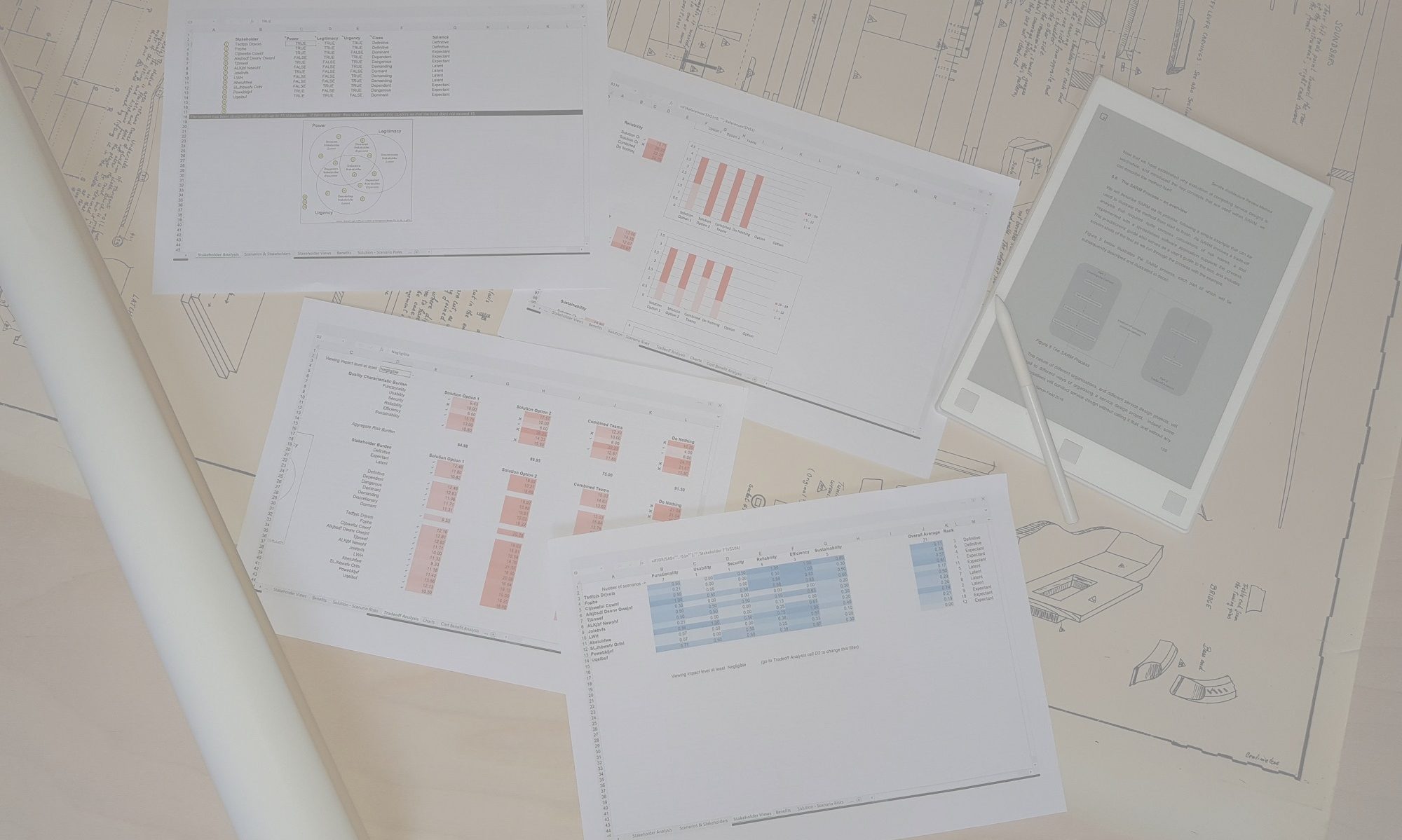This worksheet contains reference information that is used by the rest of the SARM spreadsheet tool. There is no need to refer to this worksheet if you wish to use the tool ‘out of the box’. However, if you wish to make changes to any of the models or language used in the tool, then this is the worksheet where you can specify your changes. The areas that you can change to configure the tool are marked out in green. A summary of each section follows below:
Level of interest
Cells B3 and B4 contain the two values that are used to indicate whether a stakeholder has an interest in each requirement. These can be changed, with B3 representing no interest, and B4 representing interest.
Benefit Realisation
Cells D8 to D12 contain the percentages used in the cost benefit analaysis calculations to adjust the benefit amount, reflecting the likelihood of a requirement being satisfactorily addressed. Remember that the lowest scoring likelihood level represents the lowest level of risks, and so will have the highest percentage of benefit. You should not change cells B8:C12. If you wish to change either the terms or the score values, you should change them in the Risk Table worksheet.
Exit Difficulty
Cells B34, B35 and B36 contain the words that describe the 3 levels of exit difficulty, from highest to lowest. You can change the texts here, and your changes will be reflected in the drop-down lists in the Cost Benefit Analysis worksheet. But you cannot change the number of options. Cells C34, C35 and C36 show the corresponding percentage increase to the development cost that will be applied according to the level of exit difficulty.
Context
The language used to describe the different elements of the context, defined in the ‘Context’ worksheet, is specified in cells B39 to B42. If, you prefer to use the terms Attribute and sub-Attribute instead of Characteristic and sub-Characteristic, you can change them here and those changes will be reflected throughout the spreadsheet. The language of PBAM, for example, would place the words ‘Zone’, ‘Area of Concern’ and ‘Question’ in cells B39, B40 and B41 respectively.
Tangible Benefit Types
Cells B48 to B52 contain the language that is used to describe the various benefit options in the tool.
Quality Model
The Quality Model is defined in cells G1 to P27. Row 1 is used to define the names of up to ten Quality Characteristics. If there are fewer than ten, the right-hand column headers should be left blank. Row 2 should be left unchanged, as these names are used in table lookups to populate the drop-down lists in the ‘Context‘ worksheet. Rows 3 to 27 are used to list the sub-characteristics that belong to each Quality Characteristic. These should be listed from the top down.
For the drop-down list of sub-characteristics to work properly, you also need to update ranges specified in the Name Manager. To do this navigate to the Formulas tab in Excel and select the Name Manager (make sure that the worksheet is unprotected before you do this). Select the entry for Characteristic1 and change the cell range in Refers to field so that it corresponds to the list of sub-characteristics for that characteristic. So if, for example, the first characteristic has 5 sub-characteristics, the value in the Refers to field should be “=References!$G$3:$G$7″. Repeat this process in the Name Manager for each of the characteristics and their sub-characteristics.
There is sufficient capacity in the worksheet to change the default SARM Quality Model to those described in, for example, ISO 25010, ISO 25011, Perspective Based Architecture Method or the SABSA Business Attributes or High Level General Business Attributes models. You should make sure you are licensed to use any new models you choose to adopt with SARM.

